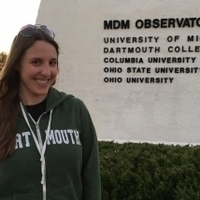Abstract: Supernovae are violent explosions that marks the end of a star's life, the study of which has been instrumental in building our knowledge of the universe. Despite decades of observations, we still do not have a clear picture of the explosion dynamics of these events. Analyzing the composition and distribution of the ejecta can provide clues about the nature of the explosion. It is not until late times, some 100+ days after the explosion when the ejecta become partially transparent, that a supernova enters the so-called nebular phase that we can probe the central regions of the explosion. The goal of my thesis was to examine some of the phenomena seen in the late-time spectra of supernovae in order to investigate the kinematics and emission properties of the stellar debris.
I first examined the nebular spectra of Type Ia supernovae, the explosions of white dwarf stars, to investigate the progressive red shifts exhibited by several blue spectral features. This phenomenon, while known for decades, had been poorly modeled and the physical implications have not been addressed. I also analyzed late-time narrow, transient absorptions seen in a small subset of Type Ia supernovae which have not been discussed in the literature before. Nebular spectra are comprised of broad, blended features that evolve slowly, so finding narrow features come and go in Type Ia spectra on short timescales is unexpected. I then studied late-time spectra of a Type II-L supernova, a relatively rare core collapse supernova, and compared the late-time evolution of Type II-L supernovae to the better studied Type II-P supernovae. At late enough epochs, the reverse shock is observed, signaling the transition from supernova to supernova remnant. Finally, I investigated the Crab Nebula's northern ejecta "jet'' and explored its relation to the initial expansion of the supernova remnant. I constructed 3-dimensional models of the jet and analyzed how the jet connects with the nebula.
